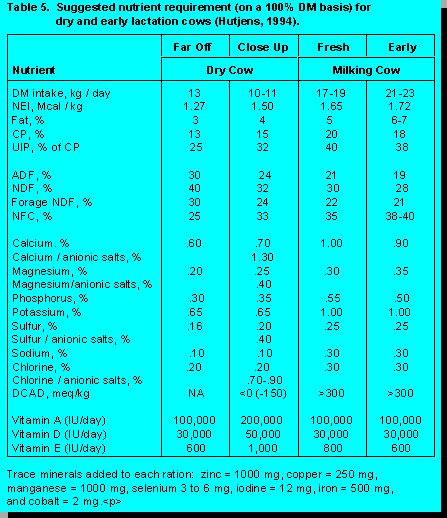Introduction
Model One: Shifting to TMR with Existing Facilities
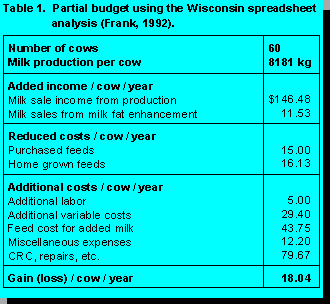 Based on these variables, a partial budget
was calculated in Table 1. Profit was $18.04 per cow based on 554 kg more milk and an increase
of 0.1 milk fat point. Table 2 lists the profit potential (ranges from $34 to +$64 per cow per year)
based on various feed costs and milk production responses. New York researchers measured a 1.3
kg milk response when herd shifted from parlor feeding to TMR systems. Increasing herd size
from 60 to 80 cows (keeping all other variables constant) increased profits $18 per cow per
year.
Based on these variables, a partial budget
was calculated in Table 1. Profit was $18.04 per cow based on 554 kg more milk and an increase
of 0.1 milk fat point. Table 2 lists the profit potential (ranges from $34 to +$64 per cow per year)
based on various feed costs and milk production responses. New York researchers measured a 1.3
kg milk response when herd shifted from parlor feeding to TMR systems. Increasing herd size
from 60 to 80 cows (keeping all other variables constant) increased profits $18 per cow per
year.
Another consideration was the pay back capacity of TMR technology. The model considers debt serve (principal and interest) using available cash. Two factors included in the calculation were the length of time to achieve expected production gain (12 months) and length of time to achieve reduced feed costs (24 months). Data in Table 3 indicate the number of months required to repay the costs of setting up a TMR system over a range in feed costs and production responses. These data indicate that the economic viability of an investment in a TMR system is dependent on achieving a milk production response to TMR.
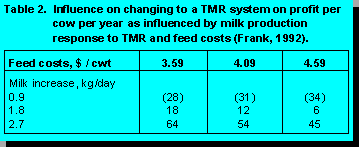
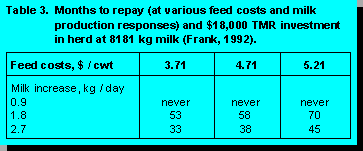
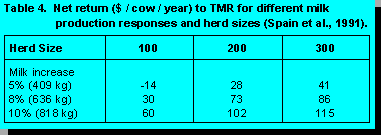 Table 4 lists marginal costs and
returns for 100 and 300 cow units at three different levels of milk production. Several
conclusions can be drawn from the results.
Table 4 lists marginal costs and
returns for 100 and 300 cow units at three different levels of milk production. Several
conclusions can be drawn from the results.
Smaller herd sizes should not discount TMR systems because significant cost reductions can occur (eliminate hay storage, purchase of used equipment, or use of existing equipment). New York workers listed several other economic factors not included in either model. Veterinary cost declined 10% with TMR due to less acidosis, ketosis, and nutritional stress.
Milk parlor efficiencies lowered milking time by 30 minutes because cows were grouped by level of milk production with more uniform milking times. Less palatable feeds can be used which may be more economical or effective (animal by-products, fat products, or additives).
Management Guidelines
Once a producer has determined that TMR is an economically sound choice, the following points can be considered.
